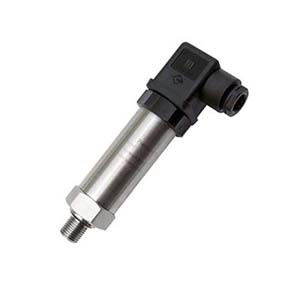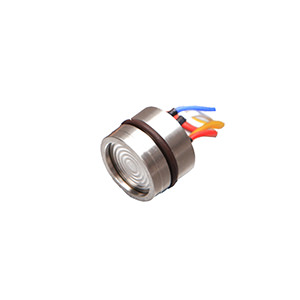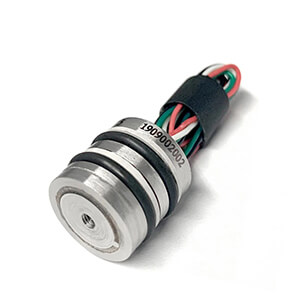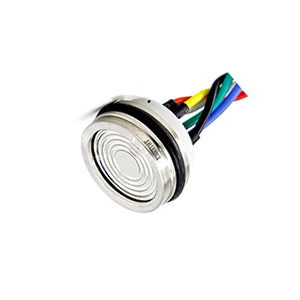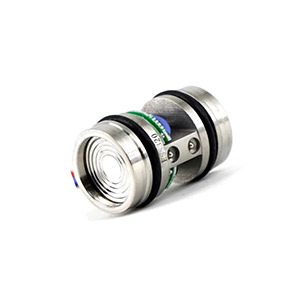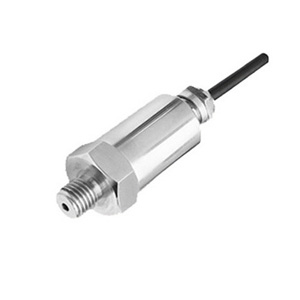Last month, we posted article to explain the relationship between pressure transducer and pressure transmitter, if you are not very clear and intent to learn the details, please check transducer v.s transmitter v.s sensor. Or we are wrapping things up below for your short review.
- Common points: Both pressure transmitter and transducer (sometime even pressure switch) are generically referred to pressure sensor; they generate/modify an electrical signal (except pressure switch) in proportion to medium or measuring variables.
- Pressure transmitter: Output signal is current loop such as 4-20mA or 0-20mA, which can be transmitted over very long distances with same current flow in all parts of the loop.
- Pressure transducer: Output signal is voltage (sometime mill volt) such as 0-10Vdc, 0/1-5Vdc, 8-24Vdc/ac, 11-30Vdc/ac etc. however we’d admit volt drops and interference can have an effect on accuracy especially when long distance measuring come into consideration.
However increasingly, we’ve been questioned many times because our customers have confused pressure switch and pressure transducers also the difference between them.
Consideration must be given to the fact that in many cases both definitions are interchangeable but they are significant difference when it comes to functionality and safety performance they provide.
Understanding the differences can help you know when to use a pressure switch versus a pressure transmitter and vice versa.
Difference on conclusion (to stop here to get a rough idea about the difference if no sufficient time)
Pressure switch
- Far more simplistic than pressure transducer
- Can make contact or break contact which moving into one of two positions.
- Not highly accurate if compare to pressure transducer
- Need to be tested manually if want to make sure whether it work properly.
- Easy to install
Pressure transducer
- More advanced and sophisticated than pressure switch
- Far more accurate and repeatable than pressure switch
- Can provide digital display
- Can be tested automatically many times every second
- Always connect to logic board to improve safety performance
Difference in details (more specific details set forth below for your further interesting)
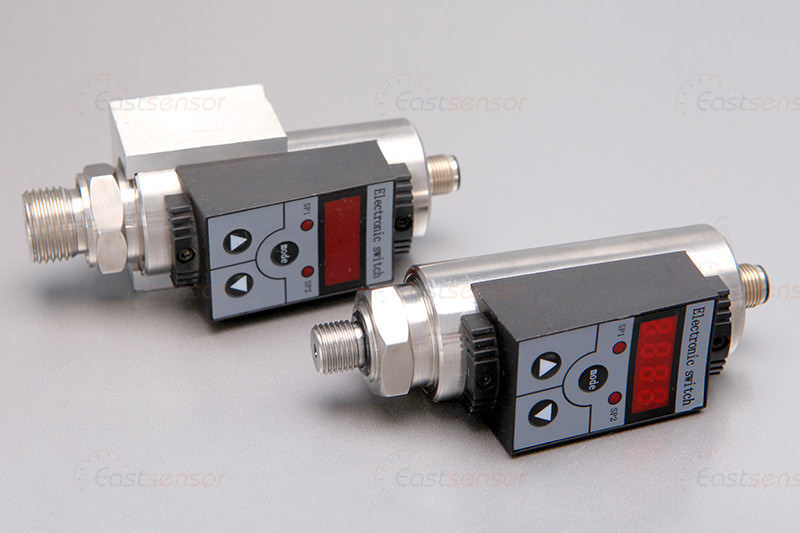
A pressure switch is a device that can measure pressure electromechanically in a process, pressure switch can complete the function of “on” and/or “off” when a pressure reaches the given limited high or low points that predefined, in case of that the switch can open or close/contact or break a circuit and move into one of two positions by the pressure of medium it measured.
Pressure switch provide a simple mechanical switch linked to an on/off valve or pump which can effectively and reliably control the process at hand, keeping a tank from running dry or a temperature from climbing too high.
The accurate of pressure switch is not very high, let’s make a small example, the current most popular type of pressure switch range is 0-220bar with accuracy of 5% FS.
Once given a certain pressure for example 80bar, which means the trigger condition can be alarmed anywhere between 69-91bar (5% of 220 =11, 80+11=91, 80-11=69) and the alarm may trigger at a different pressure within this range every time.
Another drawback of pressure switches is that the only way to know if the switch is working properly is to test it. This requires that the pressure switch must be physically disconnected from the pipeline to allow the pressure to fall below the low pressure alarm set point and, if it’s a high/low switch, connected to a pump which raises the pressure above the high pressure set point.
This type of testing must be done manually and is typically only done during a periodic (in most cases annual) inspection.
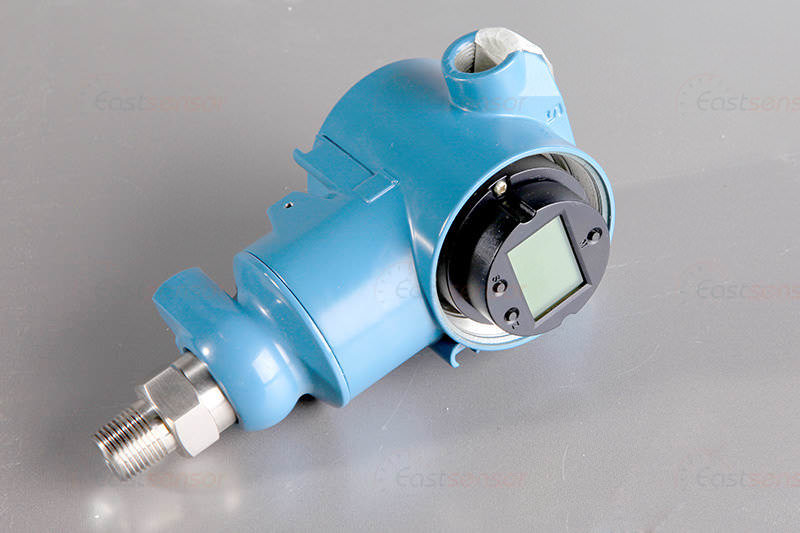
A pressure transmitter or pressure transducer, on the other hand, is also an electromechanical device which continuously measure and communicate their assigned process variables over a range of values however, instead of signaling a switch, pressure transducer sends a read-out signal of what the specific pressure value is to a remote location.
The function of pressure switch is simple, so it always is deployed at some critical environment to implement key safety task, for example, oil wellhead can occur extreme high pressure spikes which probably lead to heavy blowout when pressure touch the limitation.
In case of that a pressure switch can function well in this application to prevent it by triggering contact or break at predefined points.
On the contrary, pressure transmitter can be produced to more sophisticated. Via pre-installed software, the pressure transmitter can interpret the given pressure reading and transmit signal to logic board or remote device.
It can be extremely helpful for measuring efficiencies of pressure systems and can control many industrial functions, such as inlets and outlets, chemical or fuel mixtures, or can even act as a safety switch itself depending on how the software is set up to control the system.
Wrapping up
When choosing between pressure switch and pressure transmitter, you’d better ask below questions yourself.
- In the case of normal process, can the operation variable be allowed to vary between lower and/or upper limits or is more precise setpoint range required? If the variable can vary from one to another point, then pressure switch is needed, or pressure transmitter is good choice to implement continuous communication between a predefined pressure ranges.
- On top of control functionality, is local display needed or is there any need for remote communication and the alarming of process variable in question?Just how precisely the process variable must be measured – and controlled – will determine how accurate (i.e., how expensive) the transmitter will need to be.
- If there is a need to display or communicate the process variable in question, application of a transmitter also is indicated. A switch by its very nature does not provide a measurement signal output to drive a local display or remote communications. It simply changes state when its threshold is crossed, initiating a discrete (on/off) control action.
- What are the consequences if the process variables move outside its intended range? Does that lead to device damage, excessive downtime or an unsafe condition ensue?
- If adverse consequences such as equipment damage, excessive downtime or an unsafe condition are likely to ensue if the process variable moves beyond its intended range, risk analysis and safety considerations come to the forefront. In these types of applications, the transmitter holds one advantage over the switch in that it’s easier to tell if a transmitter is not working.
- This is both because of its continuous communications output and the extensive self-diagnostics built into today’s electronic transmitters. While normally quite reliable, there’s no obvious or automatic way to tell if a switch deployed in a protective (non-control) application has failed.
Additional Posts which may be of interest
- How to select Pressure Gauge?
- Basic Knowledge You Need to Know about Pressure Gauge
- 10 practices need to considerate before choosing pressure transducer
- What is The Difference between Pressure Transducer and Pressure Transmitter?
- Basic Knowledge You Need to Know about Pressure Gauge
- 10 practices need to considerate before choosing pressure transducer

